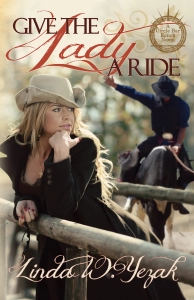I got pulled aside at a recent conference by someone who was agonizing over her story idea. We talked about it—she had a great idea, just didn’t quite know how to execute it. We discussed plot, ending, characters. The way she discussed her antagonist prompted this post. He’s a bad guy. Evil. Horrible. Awful.
She forgot that he’s a hero.

Everyone has a back story. Everyone. Even the antagonist. And you not only have to know the back story, you have to be able to climb under his skin and justify his actions based on his back story. To present a convincing bad guy, you have to be the bad guy for awhile.
How bad of a bad guy is he?
- He’s not really bad, he just doesn’t agree with the protagonist.
- He’s definitely a bad guy, and he’s deranged.
- He’s a bad guy retrospectively, like in the story I discussed with the young author.
In the historical plot we discussed, the bad guy captained a slave ship. I’m not sure there are too many things worse than that. We discussed who this guy was, though, and humanized him:
- He’s a guy with a ship and a crew, doing a job in an era when slavery was controversial, but not illegal. In the South at the time, it was a way of life, and no one thought anything of it.
- He did his job at a time when slaves were chattel, and the commonly held opinion was that they were inferior. Evil idea to us now, but just a way of life then.
- He probably had a wife and family at home to whom he was very loving. Probably had friends all over the world with whom he hoisted a pint when he was in port. He probably tithed to his church.
Because he was just a regular guy with a distasteful job. The only thing making our antagonist a bad guy is his job, a job that financially supported his crew and family.
When things are “just a way of life,” no one looks at them as evil—few give the status quo a second thought. Eventually, more people came to their senses and fought a war to bring the South in line and end slavery, but in the era of the story we’re discussing, there might have been a few folks shaking their heads, a few denouncing the practice, but it was still “just a way of life.”
So, you can present your antagonist as just a regular guy with a despicable job. Or, if you want to make him really bad, you can also illustrate how he treats his “cargo,” which is also how you turn him from a bad guy to a good guy, because now we’re talking about motive and integrity. If he’s the protagonist, he finds his job revolting.
But, keeping him a bad guy and to illustrate him as being totally despicable, we’d have to alter him a bit. With my scenario above—loving wife and kids, friends, church attendance—we’d have a fairly likeable guy that shocks readers once they discover his job. That would be fine if we wanted to turn a good guy with a bad job into a good guy activist trying to abolish that job. But it’s not fine if we want to keep him bad.
So, how do you round him out? Make the monster human? You don’t want to have him too sympathetic, so what do you do?
Here’s where the “save the cat” idea comes in. Give him one thing he loves, one act of kindness, one moral tenet he adheres to, and you’ve changed him from a 1920’s silent movie villain to an interesting antagonist.
- While they’re loading the “cargo” onto the ship, he can let a little boy play at the wheel.
- He can carry his scruffy dog because it’s afraid to go down the ramp to the dock.
- He can tip his cap respectfully at older ladies because they remind him of his precious ma.
Or, you can illustrate why he believes what he’s doing is right. It’ll be warped, to our minds, but it’ll fit the era:
- ain’t enough workers in the South to harvest cotton. Without that cotton, the entire United States would run around nekkid.
- ain’t agin the law, and I gotta family to feed.
- I gotta feed my crew.
- my Sara ain’t gonna grovel like me ‘n’ Sadie do. She’s gonna be a lady.
Who is your bad guy? How well do you know him? Is he a bad just for the sake of being bad? How does he justify himself? How does his situation/setting/era help justify him? How bad to you want him to be? How sympathetic?
It’s okay to make him bad, but you also have to make him human. Obvious, mustache-twirlin’ villains are for the ’20s.


















Want to have me run this on my blog and promote The Bucket List? I love this article.
Amazon Author Page Southern-fried Fiction Novel Rocket
>
LikeLike
I’d love it! Thanks!!!
LikeLike
Evil for evil’s sake characters just don’t work for me. Glad you pointed that out!
LikeLike
Glad you liked the post!
LikeLike
Good post! As a thriller writer the bad guy is just as important as the mc, and they must appear to be human – unless they’re not. 😉
To understand my psychopathic villains for my Lions and Lamb series, I read, The Sociopath Next Door. Great insights into behavior most of us find alien. Aided with other research, I was able to climb into the heads, and skins, of these men (or women), and write from their skewed pov. They may not garner any empathy from the reader, but they need to be real, not stereotypes as you mentioned.
This is one of the big changes I made to Book One of my Lions and Lamb series after you sweetly pointed out, and encouraged me to change some major plot errors. I will always be thankful, even if it meant dumping half the story and staring over. 😉
However, by including a realistic pov of a main antagonist, the story changed dramatically, becoming more believable and suspenseful. (I think.)
This is one art so many of the Biggies in the industry have down pat. Steven King’s outlandish stories work because his characters are so believable. They carry the plot, both the good guys and the bad guys.
You certainly ignited my thoughts this morning! 😀 And I am sharing!
LikeLike
I love that you reworked Lions. I loved that book! Sounds like you did the proper research for the work you did. I’m going to have to read it again (can’t believe I haven’t already!).
LikeLike
Aw thanks! Let me know and I’ll give you a nea version since Amazon won’t let you down load the revised copy. Just something else to add to your growing reading pile!
LikeLiked by 1 person
Had to chuckle at your use of dialect when posting captain’s possible motivations. According to my research – am working on a story set in 1700’s right now – sea captains in general were quite well educated. Just sayin’
LikeLike
There ya go. I don’t write in that era, so I had no idea. What would I do without you to point out my errors? 😀 😀 😀
LikeLike
Great stuff. Antagonists have long been the characters I’ve struggled with most. I had a major breakthrough earlier this year in realizing that the antagonist is the one who drives the conflict–not the protagonist. Once I realized that and started focusing on his goals and motivations *first*, everything else seemed to click into place.
LikeLiked by 2 people
I think you do a pretty good job with them!
LikeLiked by 1 person
I’m struggling with my antagonist, too. He’s not completely terrible, and neither is he a protagonist in disguise. But I don’t know how to tie him into the story! He keeps drifting away from the protagonists.
I’ll take your advice (or rather, steal your hard-earned wisdom) and see if I can make him more active and purposeful.
LikeLike
I hope the post helps! Good luck with your writing!
Sent via the Samsung Galaxy S™ III, an AT&T 4G LTE smartphone
LikeLike
Pingback: #Writober Day 23: A Path Through The Snow | Experience Writing